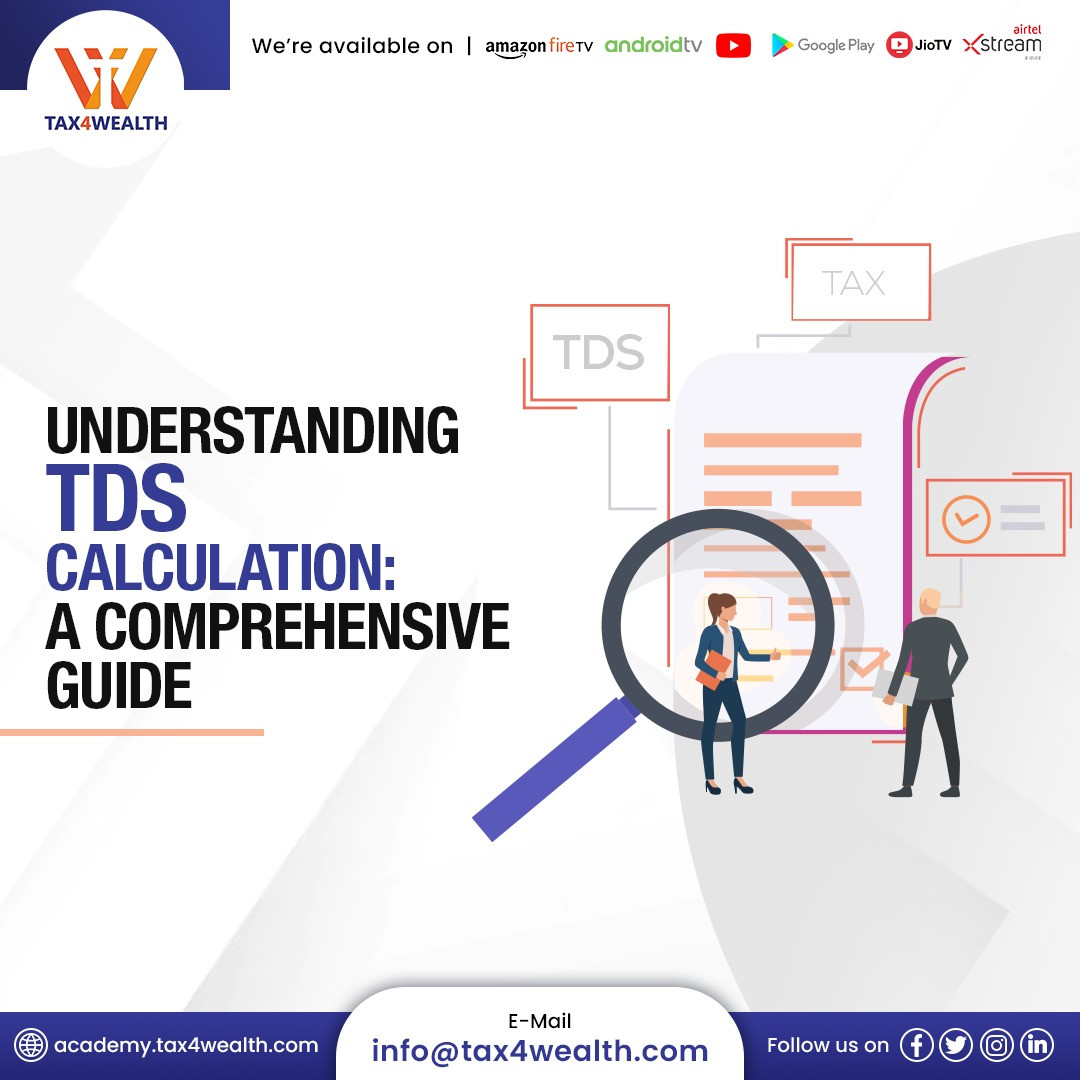
How to Calculate TDS on Salary Income?
Tax Deducted at Source (TDS)- Introduction:
Tax Deducted at Source (TDS) is a crucial component of the Indian taxation system. It ensures the collection of taxes at the source of income, thus reducing the possibility of tax evasion. TDS is applicable to various types of payments, such as salaries, rent, professional fees, interest, and more. In this blog post, we will delve into the intricacies of TDS calculation, providing you with a comprehensive understanding of its calculation methodology.
As per the provisions outlined in Section 192 of the Income Tax Act, 1961, TDS (tax deducted at source) is applicable to salary income. Typically, the employer deducts TDS from the salary payable to the employee. Under the Income Tax Act, 1961, salary received from the employer falls under the "Salary" income head, and accordingly, TDS is deducted based on the average income tax rate determined by the prevailing income tax slabs for the specific financial year, taking into account the estimated income. The TDS amount deducted is documented in Form 16, which is issued by the taxpayer at the end of each financial year.
1. Who is Eligible to Deduct TDS under Section 192?
As mentioned previously, the responsibility to deduct TDS under Section 192 generally lies with employers. The term "Employer" encompasses the following entities:
✔ Hindu Undivided Family (HUF)
✔ Individuals
✔ Companies
✔ Partnership Firms
✔ Trusts
✔ Co-operative societies
All of the aforementioned employers are obligated to deduct TDS at a specific time and remit it to the government. According to the provisions of Section 192 of the Income Tax Act, of 1961, the deduction of TDS requires the existence of an employer-employee relationship between the parties. It should be noted that the employer's status, such as being a company or HUF, is irrelevant for TDS deduction under this section. Additionally, the number of employees working for an employer is inconsequential when calculating and deducting tax at source.
2. When is TDS Deducted under Section 192?
It is important to note that TDS is deducted under Section 192 of the Income Tax Act at the time of actual or original payment of salary, and not on the accrual of salary. Additionally, if the employer provides an advance salary or pays salary-in-arrears, TDS will also be deducted accordingly. However, if the estimated salary falls below the basic exemption limit, TDS will not be deducted.
This rule is applicable to all individuals, regardless of whether they have a valid Permanent Account Number or not. Here are the basic exemption limits based on age, where a TDS deduction is not required:
✔ Below 60 years (Resident in India): 2.5 lakh
✔ Between 60 to 80 years of age (Senior citizens):3 lakh
✔ Above 60 years of age (Senior Citizens): 5 lakh
3. What is the Rate of Tax Deduction for FY 2019-20?
Please note that Section 192 of the Income Tax Act does not specify a specific rate for TDS calculation. Generally, TDS is deducted based on the applicable income tax slab rates for the specific financial year in which the salary payment is made.
To begin with, the total salary of the employee is computed after considering all applicable deductions, and then the tax is calculated based on the relevant tax rate. If an employee wishes to opt for the new tax regime, they can inform their employer accordingly for each financial year.
Normally, the employer calculates the tax at the beginning of each financial year. The TDS amount is determined by dividing the estimated tax liability of the employee for the particular financial year by the number of months of employment.
However, if an employee does not have a PAN, TDS will be deducted at a rate of 20% (excluding the higher education cess and education cess). If there is a shortfall or excess in any deduction, it can be adjusted by reducing or increasing subsequent deductions made during the financial year.
If any advance tax has already been paid, it can also be adjusted in the computation of TDS.
Illustration:
The tax on salary income is deducted based on the average rate of income tax, which is calculated using the following formula:
The average rate of income tax = Income tax payable (calculated as per the tax slab rates) / Estimated income of the employee
4. Does Receiving Salary from Multiple Employers affect?
If you happen to work for more than one employer simultaneously, you are required to provide details of your salary and TDS through Form 12B to either of the employers. Once the employer receives this information from you, they will be responsible for computing your gross salary and deducting TDS accordingly.
Furthermore, if you resign from your current employment or join a new employer, it is essential to share the details of your previous employment using Form 12B with your current employer. Based on the information regarding your previous year's salary, your current employer will calculate and deduct TDS for the remaining months of the relevant financial year.
However, if you choose not to share the details of your previous employment, each employer will independently deduct TDS based on the salary paid to you by them.
Conclusion:
Determining the applicability of TDS involves considering the type of payment, threshold limits, relevant sections of the Income Tax Act, and any applicable exemptions. Adhering to the guidelines ensures compliance with tax regulations and helps avoid penalties. It is advisable to seek professional advice or refer to the Income Tax Act for specific cases to accurately determine the applicability of TDS.
For more information, Visit us at: https://academy.tax4wealth.com/
No comments yet, Be the first to comment.













